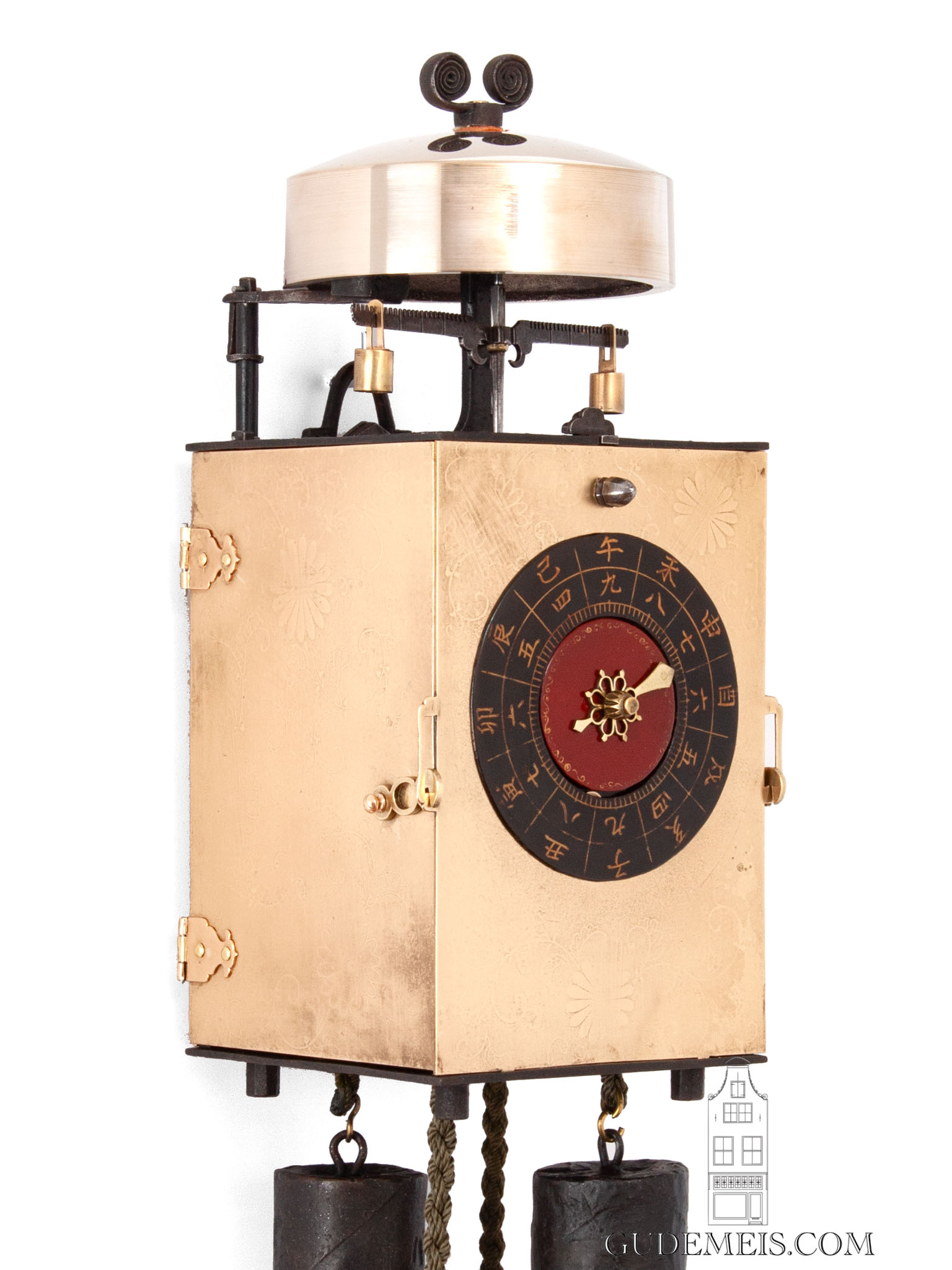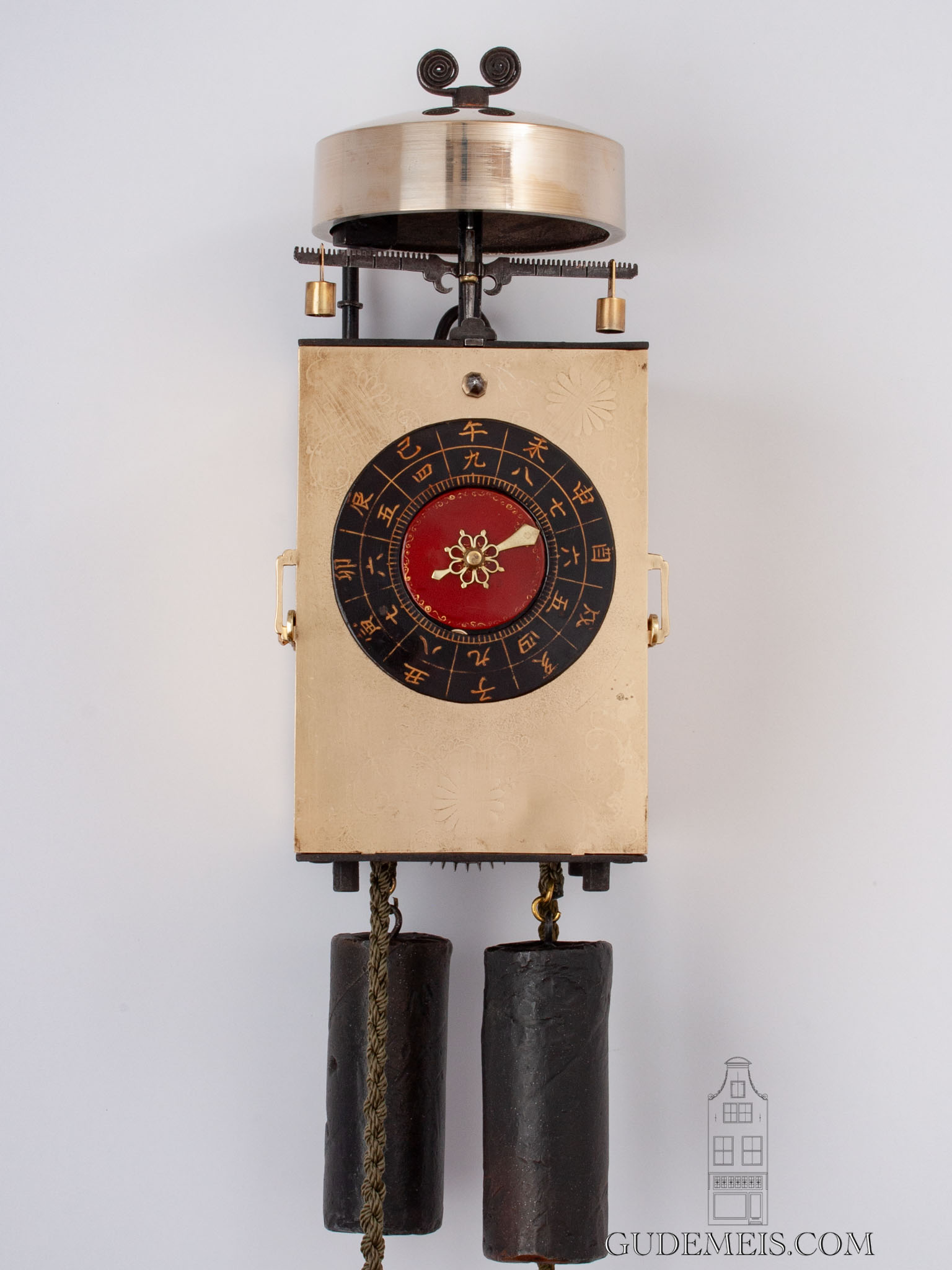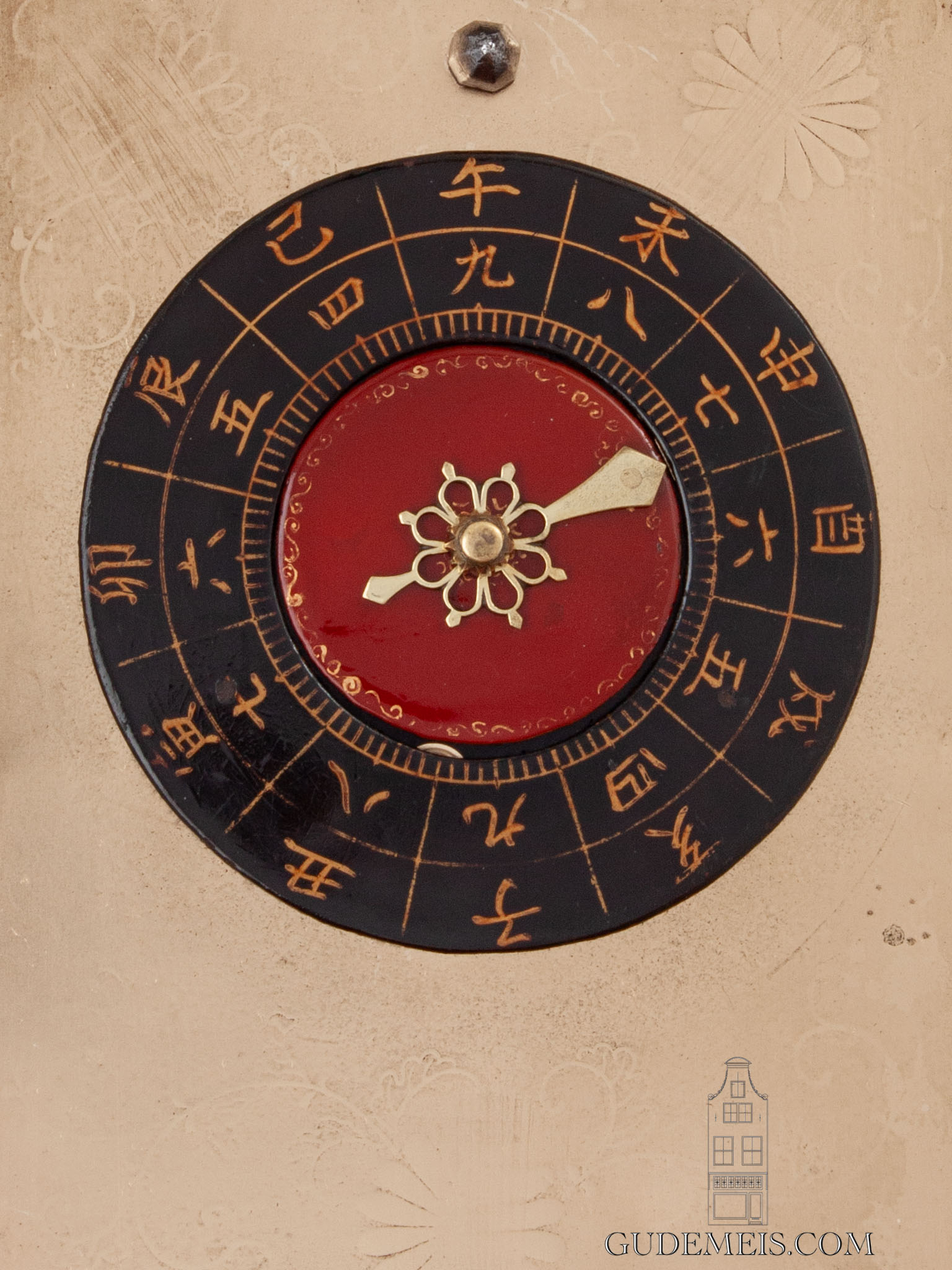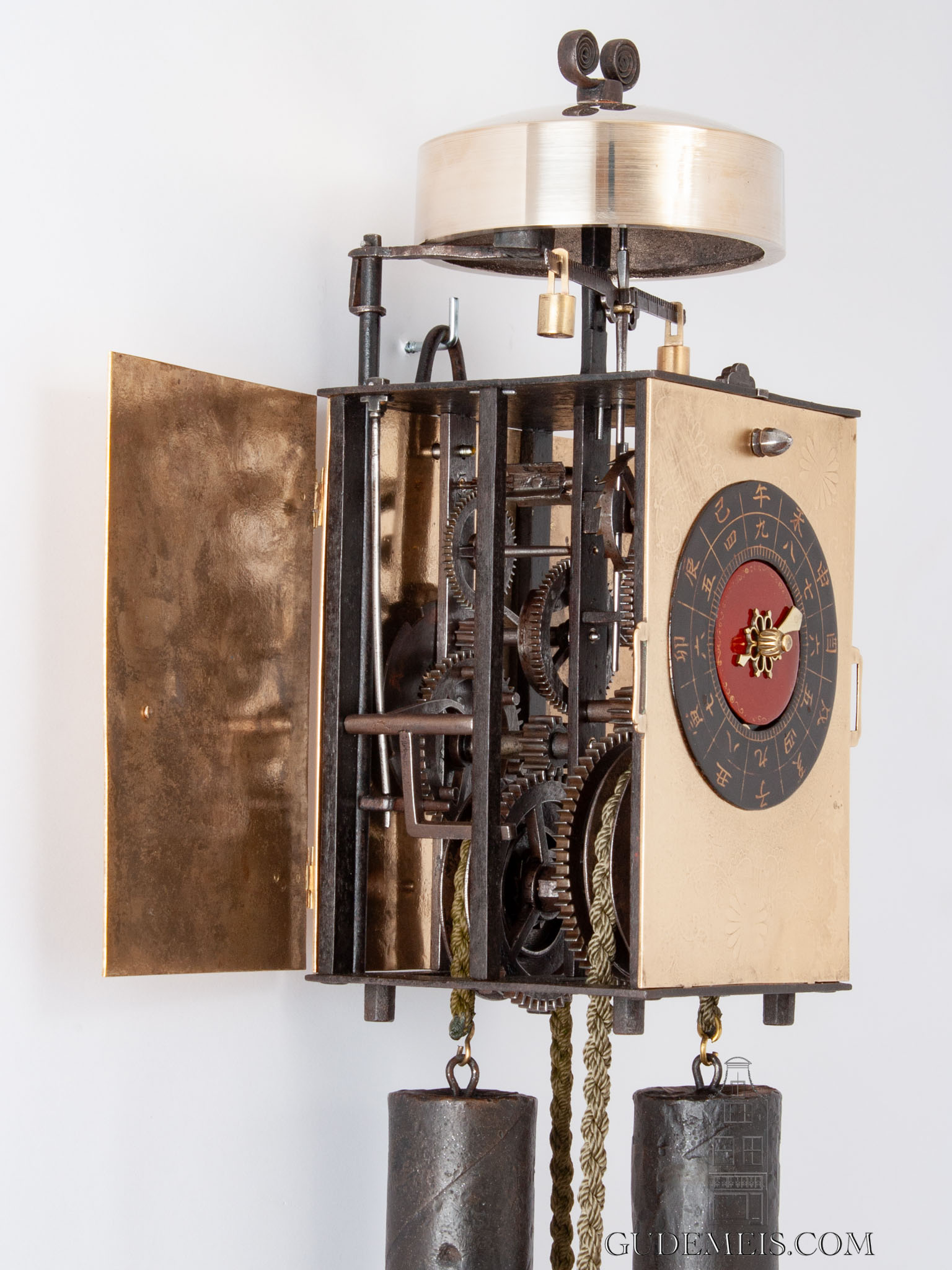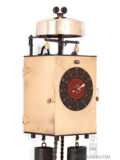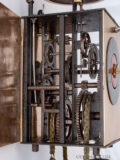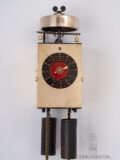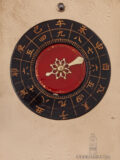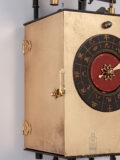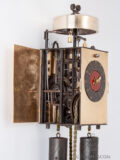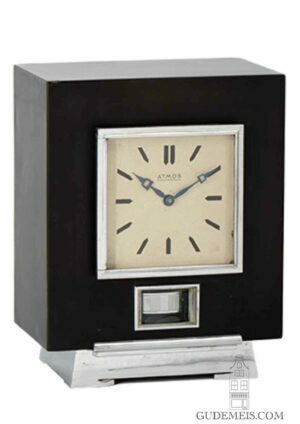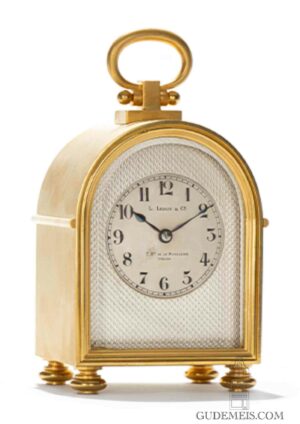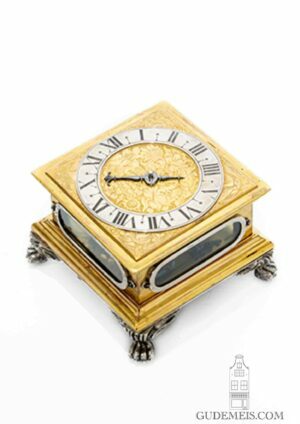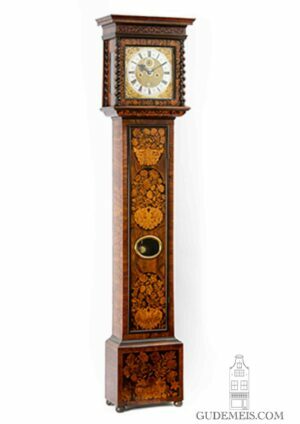A Japanese brass and iron striking lantern clock, kake-dokei, last quarter 18th century.
Description
Japanese timekeeping
Mechanical clocks were introduced into Japan by Portuguese Jezuits wanting to spread Christianity in the 16th Century. The clocks they brought with them were mostly of English and Dutch make. The Japanese took these as starting point for their own clocks. The way the Japanese kept time differed from ours before 1871. Contrary from the Western system deviding the day into twenty-four equal hours, the Japanese had a Temporal system. The day started at sunrise and ended at sunset and was divided into six hours. The same applied to the night. With the change of seasons the length of the day-hours also changed. The summer ‘hours’ being longer than the winter ‘hours’. Japanese clocks were adapted to this way of timekeeping. With this early lantern clock the small weights on the balance needed to be adjusted every morning and evening. It causes the clock to run faster and slower during the day and night. Although the Temporal hour system might look strange to us, it is actually not that strange in an agricultural society in which one depends on sun light.
Dial
The 9-cm laquered dial has twelve ‘Toki’ on a black ground. The ‘Toki’ have line-divisions and the number of strikes is indicated. The pierced brass single hand is mounted on a red disc and revolves once per twenty four hours. A revolding hand is an early feature for Japanese clocks. Later clocks have revolving dials. The dial is fitted on a ornate hammered front.
Balance
Another early feature is the fact that the whole movement is made of iron. It is driven by two weights and is of two day duration. As described abovez, the rate of the clock is determined by a balance with adjustable balance weights. The clock has a vertical verge crown wheel like the early European balance lantern clocks. The clock has Japanese striking by means of a countwheel. The sequence differs from the Western striking. At the first ‘hour’ it strikes 9 times. At the second hour 8 and so on until 4. It has a single strike for the half-toki.
Kake-dokei
The brass case has doors similar as the front of the clock adorned with flowers and foliate scrolls. The whole is surmounted by a bell. It is suspended by a hanging hoop. There are several types of Japanese lantern clocks. The way these are supported determines the type. A Yagura-dokei a closed pyramid shaped stand hiding the weights. A Dai-dokei has an open stand with legs revealing the weights. The Hashira-dokei hangs on a wall by means of a wooden support or case. The Kake-dokei hangs directly on a wall or support by means of a hanging hoop. This latter type applies to this clock. The Kake-dokei was often hung on the main or central support of a Japanese house (the tokobashira).
